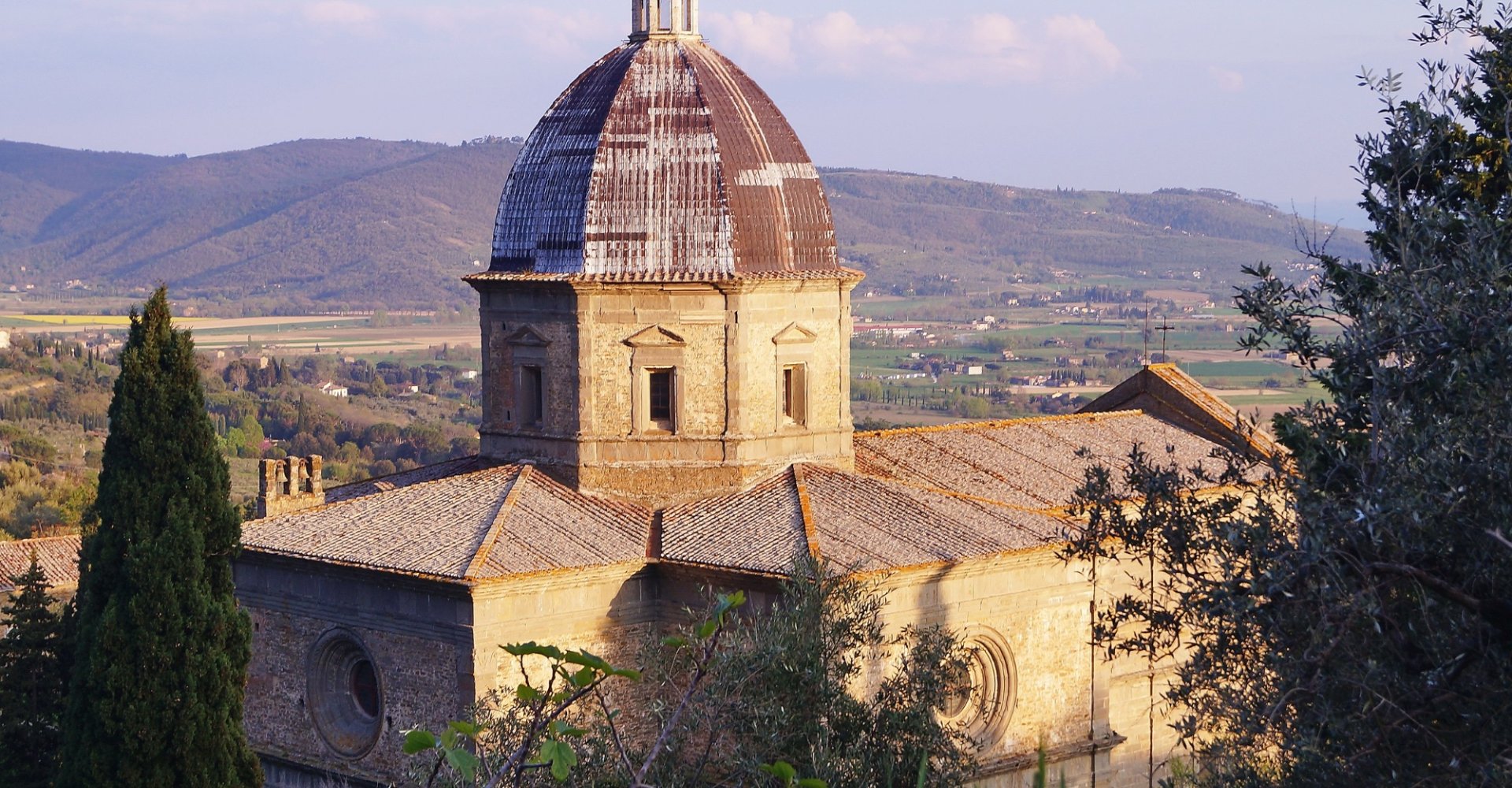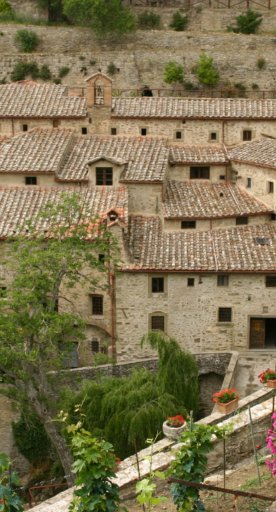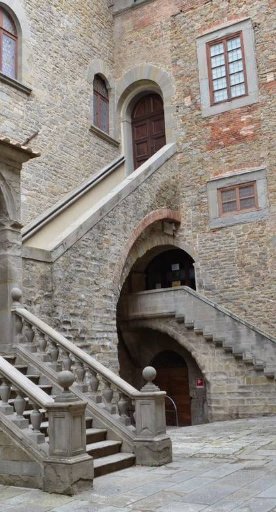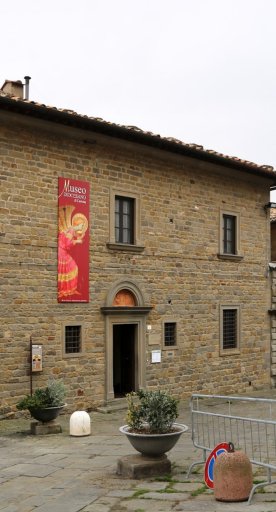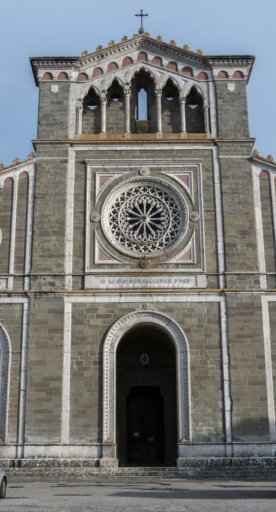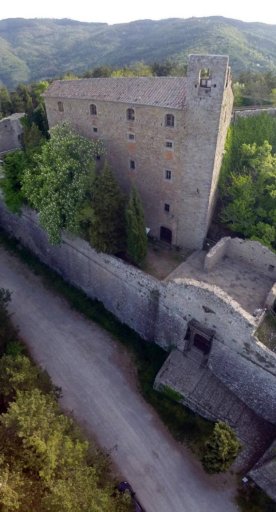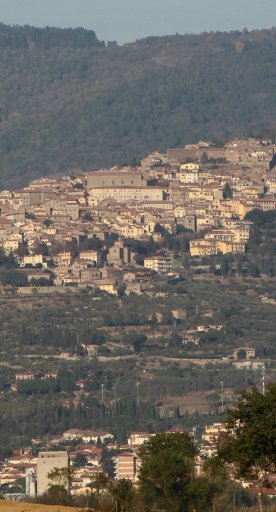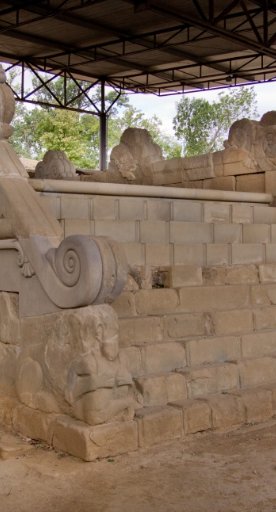Sanctuary of Santa Maria delle Grazie al Calcinaio
The church in Cortona is one of the best examples of Renaissance architectural spaces
Legend says that on Easter Sunday 1484, an image of the Madonna and Child, painted on the wall of a basin used for tanning leather – and called “calcinaio” because of the lime used for this work – began to perform miracles. That icon, venerated as sacred, is still visible today on the high altar in the Sanctuary of Santa Maria delle Grazie al Calcinaio, in Cortona.
Given the increase in worship for the effigy, the Shoemaker’s Guild, owner of the tannery, decided to build a “sacred temple” in a place that soon proved to be considerably difficult for the building techniques of the time because of the steep terrain and presence of a stream.
The architect Francesco di Giorgio Martini accepted the job and drafted the design that same year, 1484. Work began in 1485 and by 1525, the church was as we see it today, at least on the outside.
Martini designed the church by strictly applying the Renaissance principles of architecture of proportion and perspective. The overall originality of the space makes it one of the best examples of Renaissance architecture.
The exterior gives the impression of an imposing block that announces the rationality found inside. The surfaces are alternated with horizontal and vertical lines, moulding and pillars, and are livened by windows with tympanums. The paintings in the chapels are inspired by Marian imagery: from the Annunciation to the Assumption, the Immaculate Conception to portraits of the Virgin Mary with saints. On the third altar to the left, there’s an altarpiece by the Florentine Jacone (dated to around 1530) depicting the Madonna and Child Enthroned with St. John the Evangelist, St. Thomas of Canterbury – (patron saint of the Shoemaker’s Guild) – St. Roch and St. John the Baptist. A beautiful window by Guillaume de Marcillat (1516) decorates the oculus on the counter-façade.
